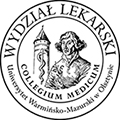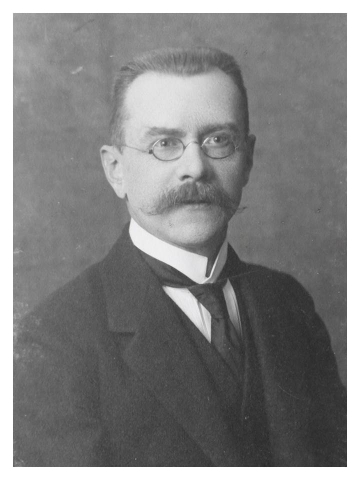Wacław Błażej Orłowski
Capacities, hard work and sacrifices are often not enough to be successful in scientific work. Sometimes a bit of luck is also needed, and the coincidence decides on the success or failure. There are plenty of instances of such situations in the history of biological and medical sciences. One of them is the discovery of pathognomonic inclusion bodies in neuronal cells occurring during rabies. It's a well-known fact that the discoverer of them was the Italian surgeon and pathologist Adelchi Negri, who in 1903 described such inclusions, which were named “Negri bodies” after him. Currently we can read about Negri bodies in each book about neurology and pathology. But was Adelchi Negri the first scientist who described bodies characteristic for rabies? Without taking anything away from the merits of Negri in the history of neuroscience, we must remember a man who described such inclusions in 1892, so eleven years before the Italian surgeon. That man was the Polish surgeon and bacteriologist Wacław Błażej Orłowski.
Wacław Błażej Orłowski was born on February 2, 1868 in the town of Brzeziny, not far from Lodz in the Polish territory, which in the 19th century was under Russian partition. He spent his childhood in Lublin, where he attended elementary and middle schools. In 1888 Orłowski started to study in the Faculty of Medicine of the Imperial University of Warsaw. During study he showed interests in neurology and bacteriology. Thanks to these interests Orłowski, on February 1890, came into contact with Odo Bujwid – the famous Polish bacteriologist recognized as the founder of bacteriology in Poland and the pioneer of hygiene, prevention and vaccination in medicine. Odo Bujwid made a deep and lasting impression on Wacław Orłowski.
In this time, Odo Bujwid conducted work on rabies. He was fascinated by the discoveries of Pasteur and the invention of an effective anti-rabies vaccine and in 1886 he went to Paris to internship in Pasteur’s Institute. During the stay in the capital of France, Bujwid became acquainted with the achievements of Pasteur, and after returning to Warsaw he established the Pasteur’s Center. It was the first agency beyond the borders of France, which made effective anti-rabies vaccination according the method of Pasteur.
Conversations with Bujwid and hours of common experiments in the laboratory revealed a great talent of Orłowski to scientific work and contributed to his important discovery in neurology and histopathology of rabies. This discovery was published on March 15, 1892. On that day Orłowski as a young, twenty four-year-old student of the fourth year of medicine gave a lecture entitled “Changes in neuronal cells during rabies” during the session of Warsaw Medical Society. The lecture of Orłowski was also printed as an article published on the pages of the scientific journal “Medical Gazette” on May 28, 1892. It should be pointed out that “Medical Gazette” in the second half of the 19th century was widely recognized in scientific circles. Moreover, results of Orłowski’s experiment were described by Bujwid in the book “Rabies in people and preventive treatment according to the method of Pasteur” published in 1892.
Orłowski performed his experiments on rabbits, which were infected with rabies by trepanation and injections under dura mater with rabies germ (in the times of Orłowski scientists did not know that rabies is caused by a virus) subcultivated by the method of Bujwid. The animals died after 7-9 days after experimental infection. The fragments of cervical spinal cord and medulla oblongata were collected immediately after the death of animals, labelled with routine histopathological method (with some changes and improvements introduced by Orłowski) and observed under microscopy. The majority of inclusion bodies were observed within the anterior horns of the spinal cord. These bodies had various forms, but a similar look. Orłowski described them in words: “agleam” or “glasslike”. Unfortunately, Orłowski did not perform studies on the brain (maybe such studies were to be performed at a later date) and did not formulate clear conclusions of his study.
It was widely believed that observations of young scientist are groundbreaking for postmortem identification of rabies and as such deserve recognition by biologists and surgeons all over the world. Encouraged by Bujwid, Orłowski translated his work into French and sent it to the Pasteur Institute in Paris. Unfortunately, the studies of young scientist were not recognized in France. Orłowski never got an answer or evaluation of his discovery from Paris; until now nobody knows why it happened. We can only assume that the achievements of a very young man from foreign Poland – the country under partition, which even did not exists on the map was just ignored. On the other hand Orłowski was aware that his studies were not completed. So he only described observed changes, but did not want to draw conclusions and make summaries. Maybe the lack of them caused the disregard of Orłowski’s experiments by French scientists.
We do not know how Orłowski reacted to the discovery and fame of Adelchi Negri, who in 1903 described cytoplasmatic inclusion bodies located in neuronal cells of cerebellum. It should be pointed out that bodies described by Negri in the brain were identical to the ones, observed by Orłowski within the medulla oblongata eleven years earlier.
The fact of the matter is that Orłowski was greatly disappointed by the indifference of the world's scientific royalty to his studies. From that time Wacław Orłowski started to work mainly on bacteriology. In the summer of 1892 Orłowski went to Lublin, where there was an outbreak of cholera. In Lublin Orłowski took part in the sanitary activities that had been taken during this epidemic for such large scale for the first time in Polish territory. Orłowski also collected materials for scientific work. Namely, he studied new types of Vibrio cholerae. One of them was named for Wacław Orlowski Bacillus choleroides ß Orlowsky .
Orłowski got a medical degree on January 18, 1894. After the graduation, thanks to the support Minakowski’s Provident, he went for a foreign internship. Initially he worked in the Hygiene Institute of the Jagiellonian University in Cracow (at the end of the 19th century Cracow lied within the boundaries of the Austro-Hungarian Empire) This institute was directed in that time by Odo Bujwid, who Orłowski knew from the works on the rabies during his medical study. Then Orłowski went to Graz and started to work under Theodor Escherich – for whom the bacterium Escherichia coli was named after him in 1919. In Graz, Orłowski studied diphtheria in children and the immunological processes during this disease. In 1896 Orłowski came back to Warsaw and took a job in the Warsaw Pasteur Center founded by Bujwid, and directed by dr Palmirski. At that time Orłowski refused the offer of the position of the head of Bacteriological Center in Saratov in the hinterland of the Russian Empire, because he did not want to leave Polish lands. In Warsaw, Orłowski was a member of the editorial board of “Medicine” the polish language scientific journal. In 1896 Orłowski constructed and described a new apparatus for the aseptic decanting of liquids.
During the work at the Warsaw Pasteur Center, Orłowski noted that a lot of people bitten by rabid animals came from Lithuania. So he decided to establish a Pasteur Center in Vilnius. Initially Russian imperial officials did not agree for this project because of the Polish nationality of Orłowski. Then after a year of efforts, thanks to recommendations from prof. Nencki from Warsaw and Łukianow from Petersburg, who presented this idea at the imperial court, the Imperial Interior Ministry agreed to the creation of a Pasteur Center in Vilnius. In 1897 Orłowski moved to Vilnius and started to work in Chemi-Bacteriological Laboratory at Vilnius Medical Society On October 20, 1897 he opened and took on management at Pasteur’s Center. This institution was modelled on Warsaw Pasteur’s Center founded and used anti rabies vaccination according Pasteur’s method in residents of all Vilnius Governorate bitted by rabid animals. Thanks to successes on the rabies eradication, the Center gained recognition of the society and the Russian government.
After World War I and the restoration of Polish independence in 1918, Orłowki continued the work at the Vilnius Pasteur Center. According to statistics carried out by Orłowski, Vilnius Pasteur Center from 1897 to 1939 vaccinated 15 000 persons bitted by rabies animals. During his work, Orłowski collected materials for scientific studies. For example he worked on the vaccination of people bitten by wolves, and noted that such patients needed much higher doses of vaccine. Moreover Orłowski conducted experiments on animals in the field of rabies and published his studies in Polish and international scientific journals. In the twenties and thirties of the 20th century the Pasteur Center in Vilnius was known all over Europe.
Not long after the Second World War broke out in 1939, Vilnius was occupied by the Red Army and incorporated into the Soviet Union. The Pasteur Center was nationalized. From 1941, Orłowski worked at Vilnius Republican Institute of Sanitary and Hygiene with Pasteur Unit. After the Second World War, Vilnius stayed within the borders of the Soviet Union. Orłowski, after repatriation, moved to Olsztyn, the town on Warmia, which before the Second World War was in Germany, and in 1945 it was incorporated into Poland. In spite of old age, Orłowski did not stop work. He tried to open a Pasteur Station to fight against rabies in Warmia and Mazury, but Polish communist authorities did not allow this project.
Wacław Błażej Orłowski died in Olsztyn on October 16, 1949 at the age of 81 and is buried at St. Joseph's Catholic Cemetery in Olsztyn. The merits of Orłowski have been greatly appreciated, which found expression in the inscription on his tombstone: “Dr Wacław Orłowski, one of the first Polish bacteriologists, creator of Pasteur’s Station in Vilnius, born 1868, died 1949. Let the work of his life be accounted for before the Lord”.



